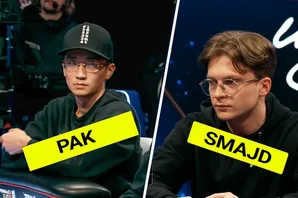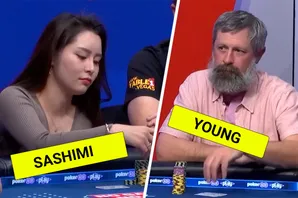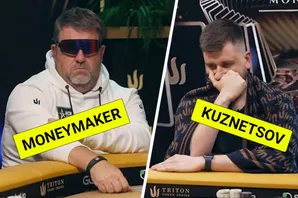As the biggest poker tournament series on the calendar, the WSOP draws attention to many aspects of poker culture. One of the most controversial of these is selling tournament action at a mark-up. Mike Matusow's recent staking offer has added fuel to the fiery debate.
"I’m selling 50% of all my wsop 10 k or higher @YouStake come checkout my package!" tweeted Matusow.
Those who checked out Mike's package discovered that the mark-up being offered was an eye-popping 1.5 on most events. Rather than rely on Twitter reactions to the deal, Poker.org asked a WSOP bracelet-winner who has played with Matusow what mark-up he would need to invest. He told us:
"Below .5. Those 10k events are really tough and I've seen some amazing mistakes from Matusow the last few years. He is so exploitable by strong players these days that there is no way he is profitable in those events. He may be okay in the 10k O8, but in a 10k hold'em event he is going to get destroyed."
It should be noted that Matusow's package includes other limit variants such as stud and razz, where his odds of getting destroyed are lower.
In response to the Twitter ridicule being piled on Matusow, Phil Hellmuth jumped to his friend's defense:
"I watched @themouthmatusow give away 2 $10,000 @WSOP Main Event seats on FaceBook in 2008!!"
The relevance of Matusow's generous act 13 years ago to his current poker profitability is unclear. Hellmuth's tweet does, however, act as a nice product endorsement of YouStake, for whom he is a spokesperson.
Mark-up: the bigger picture
While Matusow's latest Twitter scrap makes for great entertainment, the impact of mark-up on the reputation and health of poker is a critical topic.
Someone who has studied the issue closely is economist, poker player, and UC Santa Cruz PhD candidate Andrew Barber. He is responsible for a fascinating breakdown of the good, bad, and ugly of poker tournament mark-up.
Barber summarizes his analysis of tournament staking via mark-up, claiming it "has become detrimental to investors, other players, and poker in general, and I would go as far as to say that the purchase of marked up pieces could be viewed as poker welfare in many instances."
These conclusions are supported by Barber with a data-driven analysis of some of the impacts of significant mark-up. He highlights inherent problems with the mark-up market itself (investors tend to overpay for shares), and the syndrome of "profit without winning" (by selling enough action, players can profit despite having heavily-negative ROIs).
Barber also highlights how a heavily-staked player is incentivized to take poker decisions that are negative EV for their investors. For example, rather than grinding out a min-cash with a short-stack, a player may be better off punting if that allows them to enter another staked tournament.
My money, my choice?
A common defense of Matusow on Twitter is that his fans should be able to do what they like with their money, despite the investment being objectively poor.
Here too, Barber has a response:
"[J]ust because the market is functional doesn’t mean there isn’t room to educate, especially with the negative impacts that piece-buying has on the poker economy as a whole... [W]e should try to protect consumers in the event of asymmetric information."
Live tournament poker presents a particular challenge in this regard. Establishing a player's ROI is notoriously difficult, with the only information being cashes rather than profits. A cursory comparison of some of the players selling action on YouStake with their Hendon Mob database, however, makes one thing very clear.
There are those on YouStake selling action at mark-ups nearly as high as Matusow's who cannot possibly be winning players.
Featured image source: Twitter




























